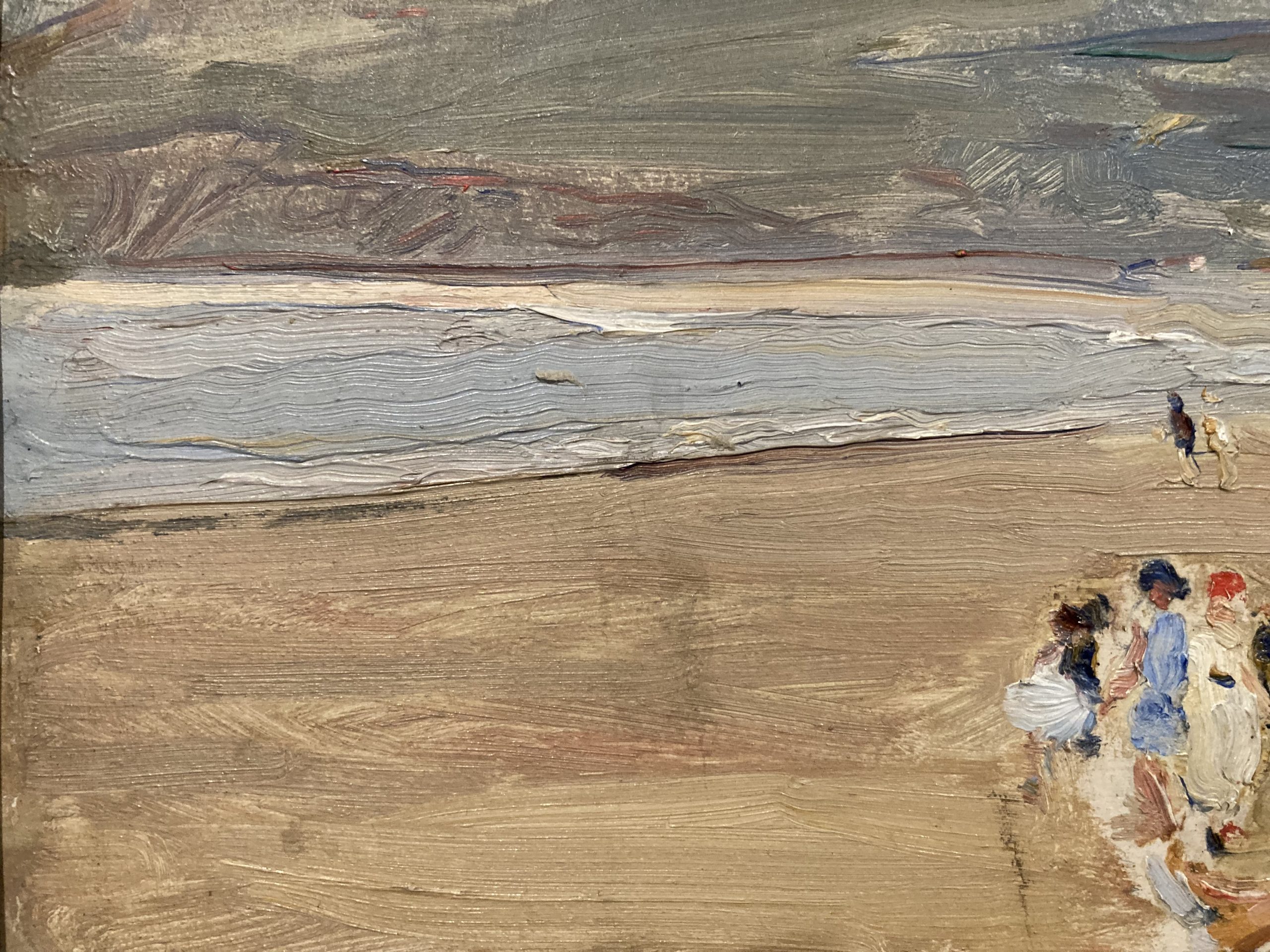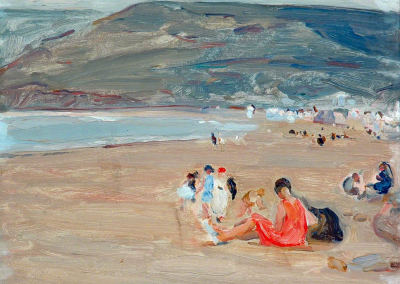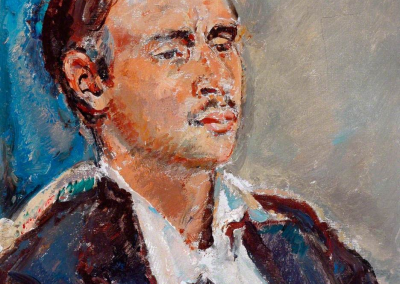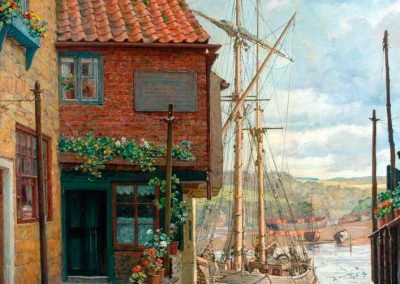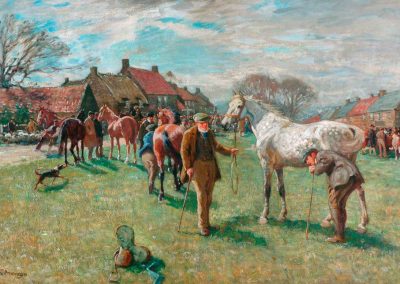Beach Scene by Florence Hess
Pannett Art Gallery, Whitby
Florence Hess (1891 – 1974) is primarily known for painting coastal scenes, particularly from Yorkshire and Norfolk. She was closely associated with the Staithes Group of Artists and the Fylingdales Group, originally based in Robin Hood’s bay, both on the North Yorkshire coast.
This small oil painting from c1925 shows a relaxed beach scene where families enjoy time in pleasant summery weather. In oil on canvas and measuring 21.6cm (H) x 26.9 cm (W), it is notable for its highly impressionistic style, with rapid brushstrokes to quickly give an impression of the moment in time.
Artists like Florence Hess liked to paint outside, in contrast to painting within a studio as in earlier periods. Painting outside (sometimes called by the French term en plein air as it was popular with French Impressionist artists) allowed them to quickly capture the fleeting moments, including details of weather and light.
You can also get an impression of Hess’s thick paint application and her quick, uneven coverage of the canvas, by looking at this close up of the canvas.
Born in Leeds, Hess studied at the Leeds School of Art, then under the tutelage of Mark Senior, from 1905, later becoming his assistant and travelling with him across Europe. During her lifetime, she exhibited widely, including at the Royal Academy.
Talking Points
Explore the painting
Examine the various activities happening on the beach. Can you tell what all the details are? Is there anything you’re unsure of? Does this add to your enjoyment of the painting or frustrate you?
The scene was painted in the mid 1920s, but do you think a beach scene would be any different in the 2020s? What about in the 1820s?
Look at the cliffs in the background. What colours has Hess used? How has she created a sense of the weather through the shadows? Can you get a sense of what time of day it is in the painting?
Do you recognise the scene? If so, which Yorkshire beach do you think it could be?
Explore Impressionism
Impressionist works often have thickly layered paint which helps to show movement but also creates texture. Are you surprised by how thickly the paint was applied?
How would this image be different in a photo?
Do you like the painting?
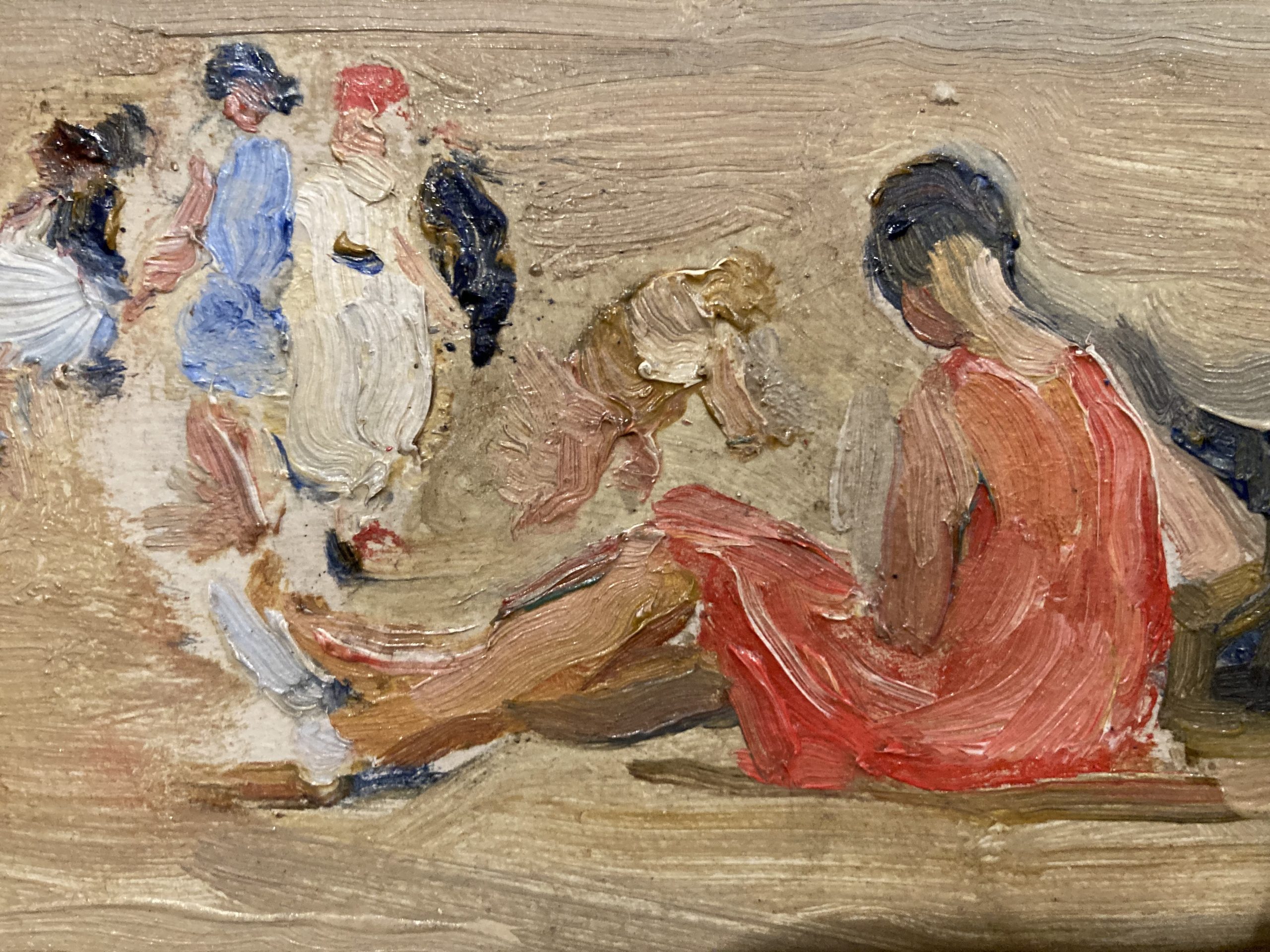
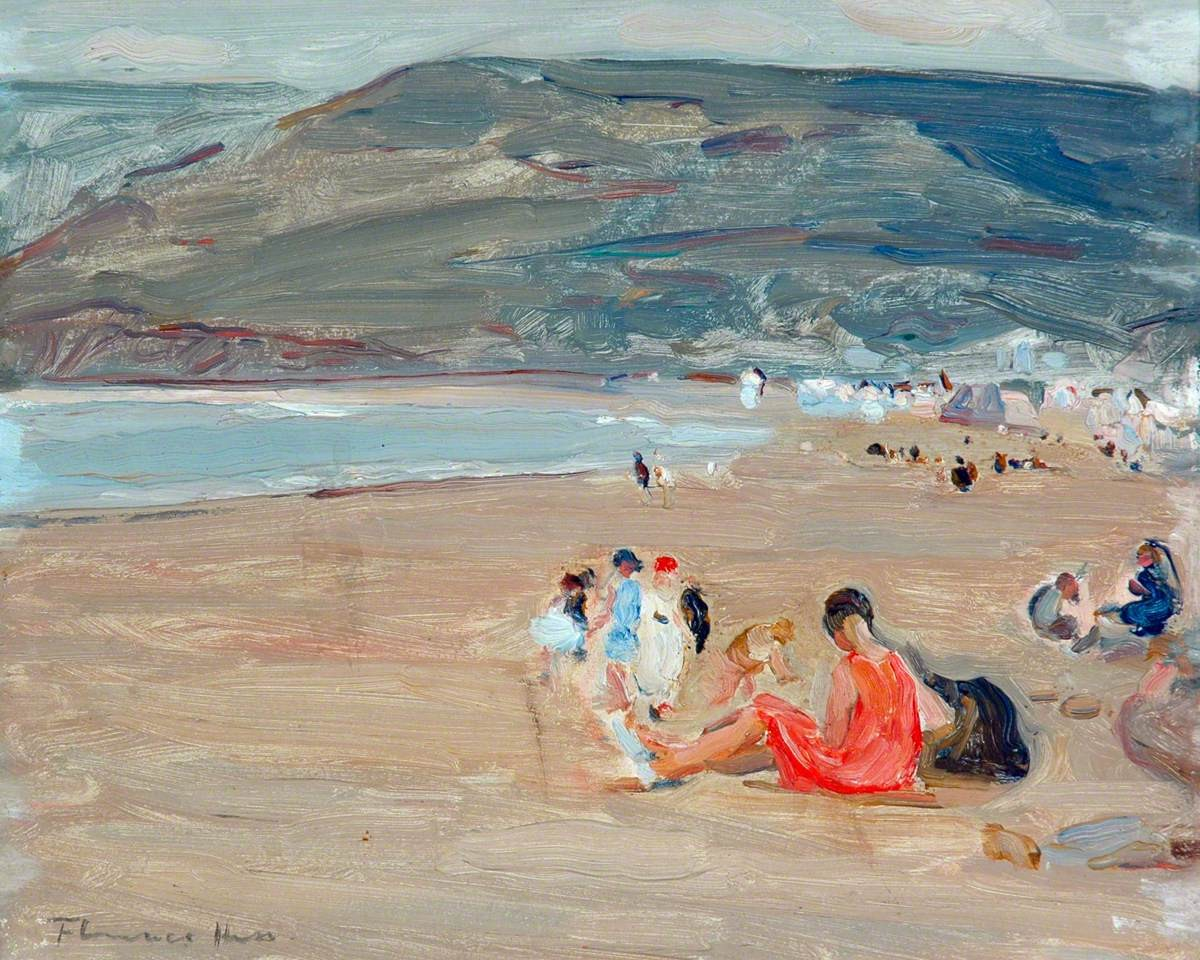
In the Classroom
Roleplay
Imagine the conversation that took place between a person on the beach that day and the artist painting. What questions would the holidaymaker have for Florence Hess? You could take this scene further by thinking of a way for the artist to be interrupted. What could happen to gain her attention?
Try it Yourself
Have a go at sketching outside. This doesn’t have to be a long activity and could just take 10 or 15 minutes. Decide, is it easy to make art outside? What equipment do you need? What difficulties might you encounter? What are the benefits?

Hands on History
You can see more artwork from both the Fylingdales Group and the Staithes Group at Pannett Art Gallery.
Museum Location
Find more artwork from the North Yorkshire Coast

